Tasty, satisfying bean fruits are not only a food product, but also a way to treat many diseases. Pods with flat seeds strengthen the body, improve metabolism, are suitable for diet. Archaeologists claim that this culture was grown in South America already 5 thousand years ago. The mention of legumes is found in ancient Rome. In Europe, beans appeared in the XVI century, introduced by Spanish sailors. And in the XVIII century in the gardens of rich nobles of Russia a beautiful flower appeared - beans. Legume plant began to be consumed later.
Content
Bean Features
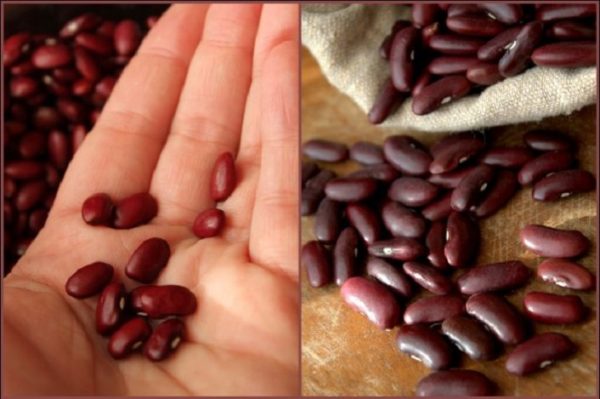 This popular culture is one of the 10 most healthy foods. But what a bean plant is is a berry, vegetable, fruit or not. To which group of food products do beans belong from a scientific point of view? A berry is a juicy, fleshy fruit with seeds. On this basis, beans are not suitable.
This popular culture is one of the 10 most healthy foods. But what a bean plant is is a berry, vegetable, fruit or not. To which group of food products do beans belong from a scientific point of view? A berry is a juicy, fleshy fruit with seeds. On this basis, beans are not suitable.
The fruit is sweet, sometimes sour. If you think that beans are seeds used in food. Then the beans are fruit. But the taste is different, there isn’t that sugar content, sourness, like fruit. Fruits grow on a tree, shrub. The stem of young beans is soft, grassy. But by the end of summer, the earth hardens, and the root branches. It looks like a fruit plant.
For us, vegetables, garden crops - carrots, cucumbers, not sweet fruits, root crops. Beans are a bean crop that is often considered a vegetable. But in the science of plants, botany, there is no definition of a vegetable. This word is from agriculture, cooking.
Vegetable in cooking, edible part of plants (tuber, stem, fruit). These do not include nuts, cereals, fruits, berries. Cereals are whole, ground grains of cereals and legumes. Cooking gives an accurate definition of whether a bean is a vegetable or not. The legume family is a separate type of crop, as are cereal plants.
Bean Benefits
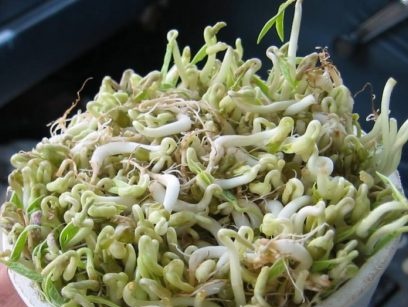 The use of beans determines the composition. Beans contain 20% vegetable protein, 30% in meat. Protein is absorbed by 70-80%, this makes the plant an indispensable dish for vegetarians. The content of trace elements, minerals, amino acids, vitamins saturates the body with the necessary useful substances.
The use of beans determines the composition. Beans contain 20% vegetable protein, 30% in meat. Protein is absorbed by 70-80%, this makes the plant an indispensable dish for vegetarians. The content of trace elements, minerals, amino acids, vitamins saturates the body with the necessary useful substances.
The plant is used in the treatment of diseases. Even the Greek doctor Avicenna advised using plants in the treatment of pulmonary diseases. To lower blood sugar, increase immunity, it is recommended to use bean dishes to diabetics. The culture is useful for patients with atherosclerosis, with arrhythmia. Cooked decoctions, infusions of the plant are advised for the treatment of:
- tuberculosis
- rheumatism;
- chronic pancreatitis;
- gastritis with low acidity;
- eczema
- kidney disease.
The plant has antibacterial, diuretic properties. Including food, 2-3 times a week, beans leads to:
- normalization of salt metabolism;
- stimulation of the production of gastric juice;
- excess liquid with toxins, slags is removed;
- potency increases;
- calms the nervous system.
With regular use of beans, tartar is less formed.
Beauticians advise making masks from boiled beans, with olive oil, lemon juice. The skin of the face, hands becomes soft, redness, skin irritation disappear. There is nutrition, wrinkle smoothing.This is due to the bactericidal, wound healing properties of the fruit, the presence of amino acids in them.
You can not use beans raw. The composition contains toxic constituents that are destroyed during cooking. Therefore, pods, fruits must be boiled, steamed, stewed.
There are contraindications, you can not use:
- with gout;
- gastritis with high acidity;
- prick, cholecystitis.
It is worth completely abandoning the beneficial culture during the period of exacerbation of these diseases.
Species and varieties
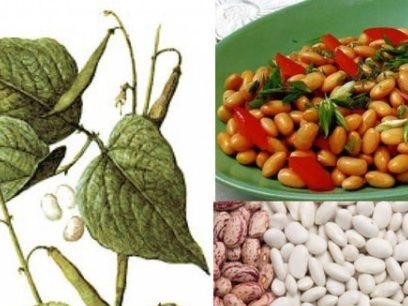 There are about 250 species of this culture. But only 20 varieties are grown. Characterization of species occurs according to external characteristics:
There are about 250 species of this culture. But only 20 varieties are grown. Characterization of species occurs according to external characteristics:
- lumpy, 45-65 cm high;
- curly beans, stalk up to 6 m high;
- climbing up to 2 meters;
- decorative, curls, used to decorate walls, palisade.
Beans differ in fruit. It can be sugar (asparagus), grain (ordinary shelling), semi-sugar (only ripe fruits are consumed). In asparagus beans, only unripe pods are picked, and then dishes are prepared from them.
In addition to green, yellow beans, varieties from Germany and Austria grow - Bluhilda, Purple King. The pods of these varieties are dark purple, the fruits are beige. When cooking, the color of the beans changes, turn green.
Shelling (grain) varieties are late. In the middle regions of Russia they do not ripen, even green pods do not boil. Valves are dense, fibrous, not tasty. Ripe dry fruits are cooked, used for soups, as a side dish, in salads. Popular varieties among gardeners are Ballad, Golden, Generous, Varvara.
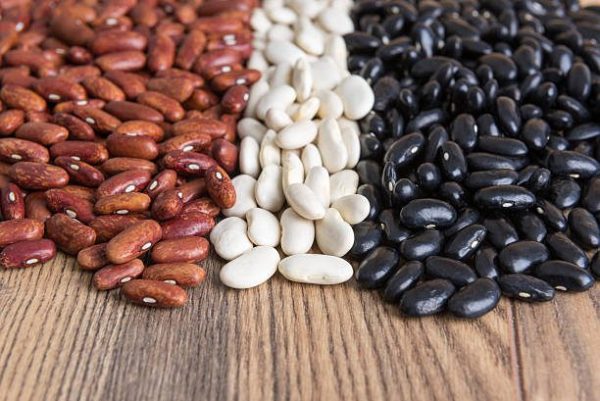 Beans, as seen in the photo, are distinguished by color:
Beans, as seen in the photo, are distinguished by color:
- white
- red;
- black.
Fruits of a white bean of solid structure, with a protein content of 20%. Without animal fat, they are absorbed quickly, by 70%. Good effect on the heart, blood vessels, lowers blood cholesterol. It also cleanses the body of excess substances. Calorie content of white beans - 120 kcal / 100g.
Red grains have calories even lower - 94 kcal / 100g. The concentration of vitamins B, C, A, PP, amino acids, other beneficial ingredients is contained in it more. It has a calming effect, affects immunity. Hair, skin, and stronger teeth become noticeably better.
Black beans are used in Latin American cuisine. The taste of grain is sweet, smoked. The concentration of nutrients there is most. It is recommended, there is for the prevention of cancer.
Bean Growing
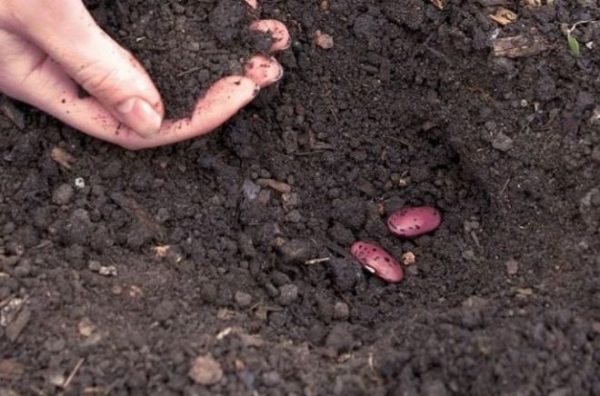 Many photos of beans and its description can be found in the photo gallery. Grassy stem, cirrus leaves. Flowers collected in inflorescence, brush. The fruits are in two wings, separated by partitions. The root root, branches in different directions.
Many photos of beans and its description can be found in the photo gallery. Grassy stem, cirrus leaves. Flowers collected in inflorescence, brush. The fruits are in two wings, separated by partitions. The root root, branches in different directions.
Beans have their own requirements for soil, air temperature. Beans are a thermophilic plant, therefore we plant after the soil warms up to 12-16 ° C, at a depth of 8-10 cm.
Folk signs advise planting a bean culture when the chestnuts bloom.
To get a big crop you need:
- prepare the soil for planting;
- prepare the seeds;
- plant, thin out;
- to loosen;
- to water;
- fertilize.
In addition to heat, the plant loves loose, airy soil, grows poorly on clay, swampy soil. It is green manure, can be planted to fertilize the soil. On the roots of the beans are nodules that accumulate nitrogen from the air, saturating the earth. Good conditions are created for the growth of other plants.
After choosing a place, you need to prepare the seeds for planting.To protect beans from diseases and insects, lower the seed into a solution of boric acid (1 g per 5 liters of water) for 6 minutes before planting. So that seedlings quickly appear, the night before planting, they are soaked in water. So get rid of insects, diseases, provide quick shoots.
A place for the growth of legumes needs a sunny, without drafts. Landing is carried out to a depth of 6 cm, the holes are placed 15-20 cm from each other. The distance between the rows is up to 40-50 cm. 5 seeds per well are planted.
After emergence, there should be no more than 2-3 shoots in one place. Others can be carefully pulled out and planted nearby.
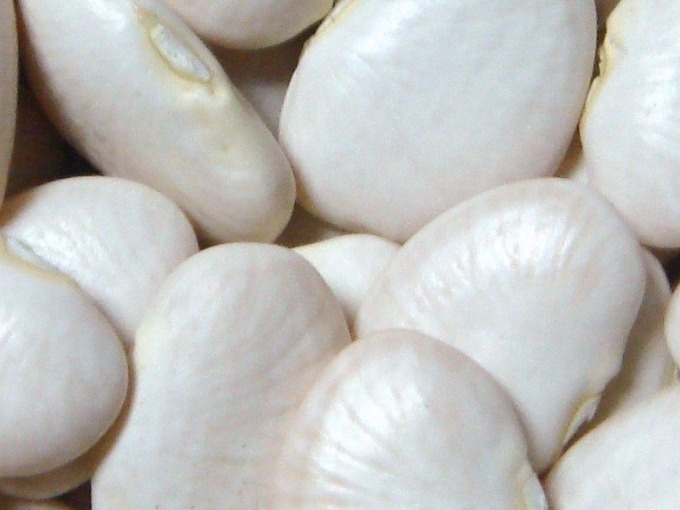 You may be interested in:
You may be interested in:Plant care
We must wait for the first shoots. Almost immediately they are carefully spudded. Conduct soil loosening:
- after germination, when the plant is already 7 cm;
- 2 weeks after the first loosening;
- just before closing the rows.
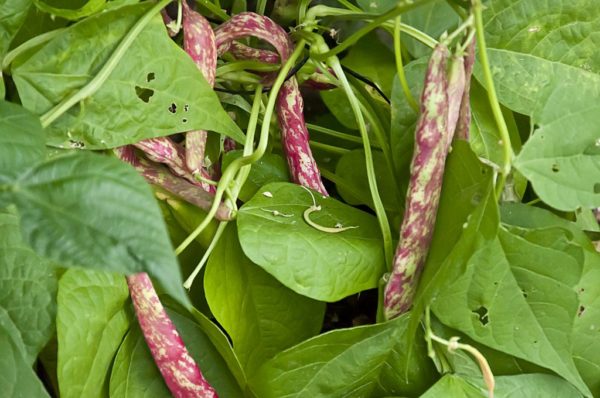 In the future, weeds must be pulled out. Leaving consists in timely loosening, watering, fertilizer.
In the future, weeds must be pulled out. Leaving consists in timely loosening, watering, fertilizer.
After the first leaves appear, it is already possible to feed a small stalk. It is best to add superphosphate (30-40g per 1 m²). When a flower appears, the plant is better off getting potassium salt. When ripening make wood ash - 10-15g per 1 square. meter.
Watering is an important condition for a good harvest. Moisturize the earth until 5 leaves appear. It is necessary to ensure that the earth is moderately moist, the soil is loose. Then stop watering and wait until the beans bloom. Further, the plant needs abundant watering. It is better to defend water in the tank for at least 24 hours. When watering, do not forget about loosening. Legumes love soft soil.
Diseases and Pests
In addition to popular methods of control, there are chemical methods of killing pests. This is the use of chemicals, biological products. But they are advised to spray with these means before flowering, it is better when planting. So that the bean culture does not become toxic to humans.
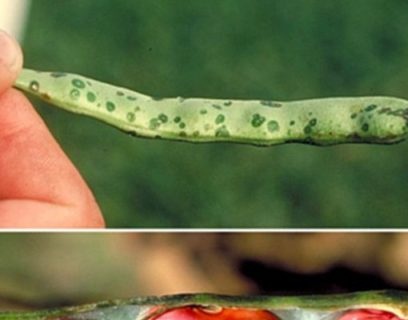 You can avoid crop loss by following the rules of prevention from diseases, pests:
You can avoid crop loss by following the rules of prevention from diseases, pests:
- observe crop rotation, only after 4 years, you can again plant legumes;
- store and sow only healthy fruits.
You should know the diseases that threaten the crop. Bean infestation pests:
- Slug. It is necessary to remove weeds, loosen the soil. It is better to collect them with your hands.
- Aphid.
- Whitefly
- Sprout fly.
- Bean kernel.
So as not to bugs wound up sprout flies, the crop is collected before the opening of the pods. After harvesting, it is better to put it in the freezer for 4 days. At -10 ° C, larvae, eggs, adult pests die. After warming the collected fruits.
Beans are affected by bacteria, fungi, viruses. This leads to the appearance of powdery mildew, anthracnose, white rot, mosaic. What to do when infected:
- Powdery mildew spreads in damp, warm weather, covering all garden plants with white dust. If detected, diseased plants are removed or burned.
- Anthracnose covers the plant with ulcers, reduces beans, rots. Remove the diseased plant.
- Root rot is noticeable on the roots, like a white, pink coating. Destroy the leaves, stem.
- White rot of noticeable white color, fungus. The plant is uprooted.
- Bacterial spotting, a virus which is distinguished by green spots on the plant, swellings appear, bubbles on the leaves.
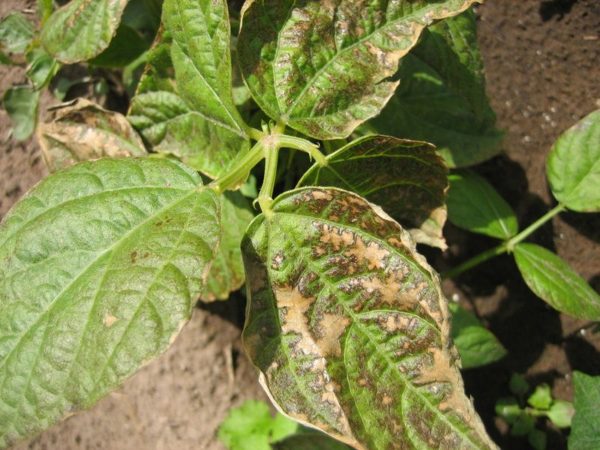 In order to prevent the emergence of plant diseases, it is necessary to do prevention. To clear the whole earth of the remains of garbage, not allowing spores of the fungus to multiply. Dig the soil. Seeds are processed before planting.
In order to prevent the emergence of plant diseases, it is necessary to do prevention. To clear the whole earth of the remains of garbage, not allowing spores of the fungus to multiply. Dig the soil. Seeds are processed before planting.
The fungus is afraid of copper, the means containing it. Often used Bordeaux mixture.When treating plants with chemicals, you can’t eat young pods so as not to poison yourself. Carefully you need to read the instructions of the product, observe the dosage, safety rules.
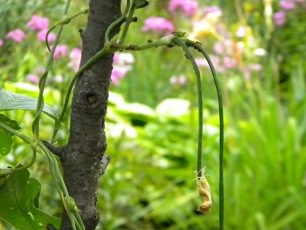 You may be interested in:
You may be interested in:Harvesting and storage
To preserve the fruits intact, follow the rules for collecting beans. It takes into account the method of further use of the crop. Summer residents advise:
- if the pod of milk ripeness is cut, it is boiled, placed in the freezer;
- when stored in pods, juicy beans are collected, green leaves.
They do not collect all at once, only ripe. After 4-8 days, the second batch will dry, which is again removed. Harvesting starts in the morning to avoid cracking. Then the quality and benefits of the beans will decrease.
When harvesting dry crops for grain:
- harvested early in the morning;
- the plant is pulled out of the soil, suspended for ripening under a canopy;
- cleaned after 6-17 days.
You can not pull out the whole plant, it must be cut. Let the roots remain in the soil, so the soil is saturated with nitrogen.
Next, thresh and dry. Protect pests from insects. For this, the crop is placed in a sealed container (jar with a lid). Before that, beans are baked in the oven. Allow to cool and place in a jar. At the bottom of the can, 2 cloves of garlic are placed, after which the capacity is rolled. Store better in a cool place. In severe frost, the fruits will freeze, germination will become worse.
Having learned useful things about beans, its properties, methods of cultivation and its preservation. This useful information will help you to always have at home the healthy fruit of the legume family.

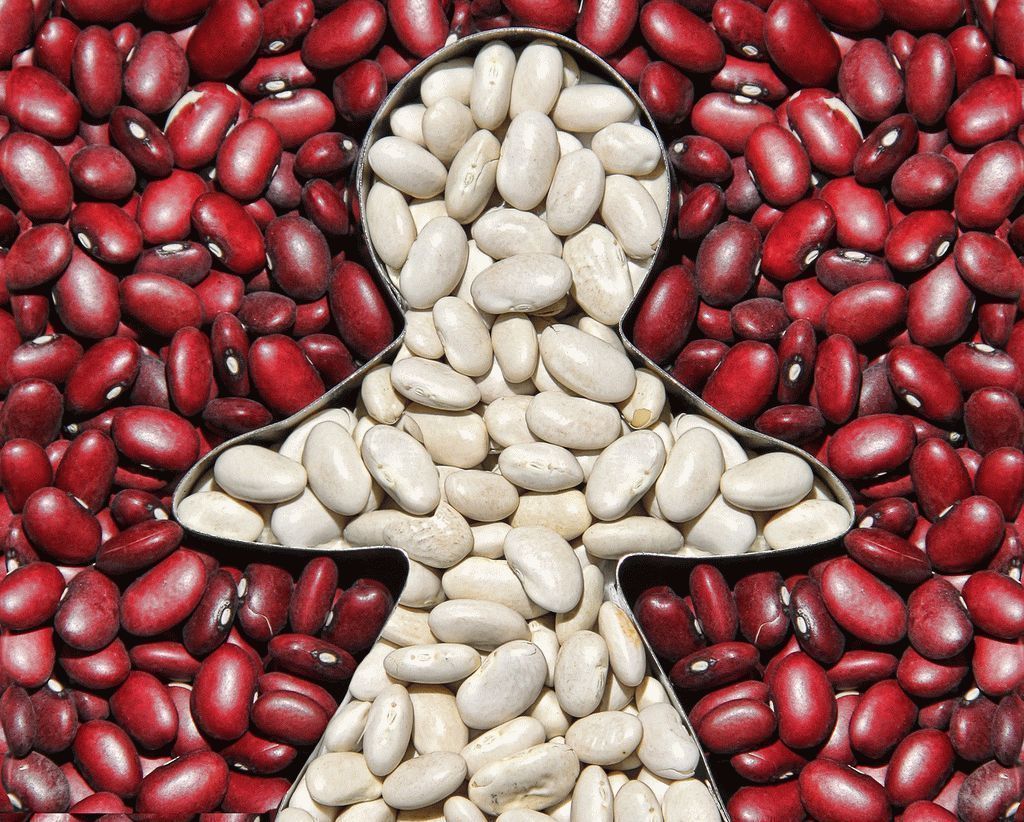
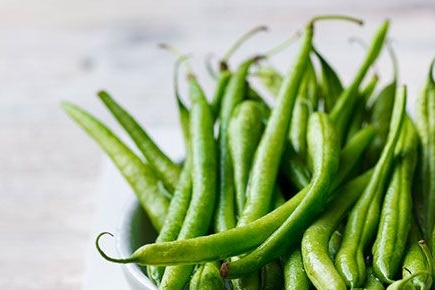
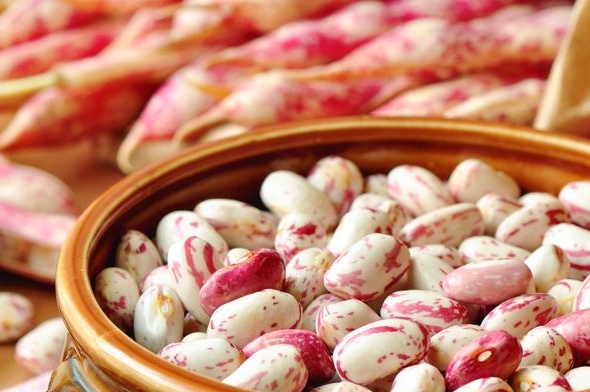
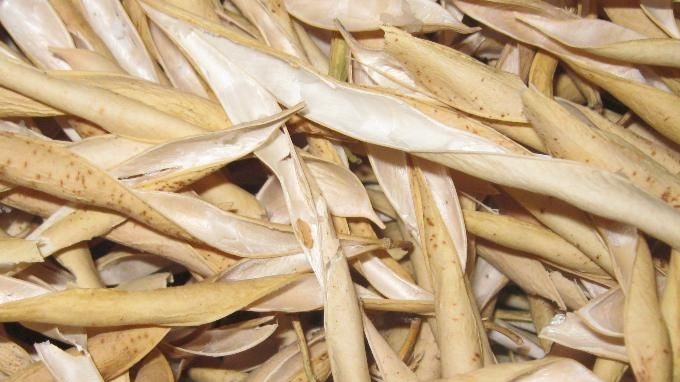 Bean flaps: useful properties, contraindications, benefits and harms
Bean flaps: useful properties, contraindications, benefits and harms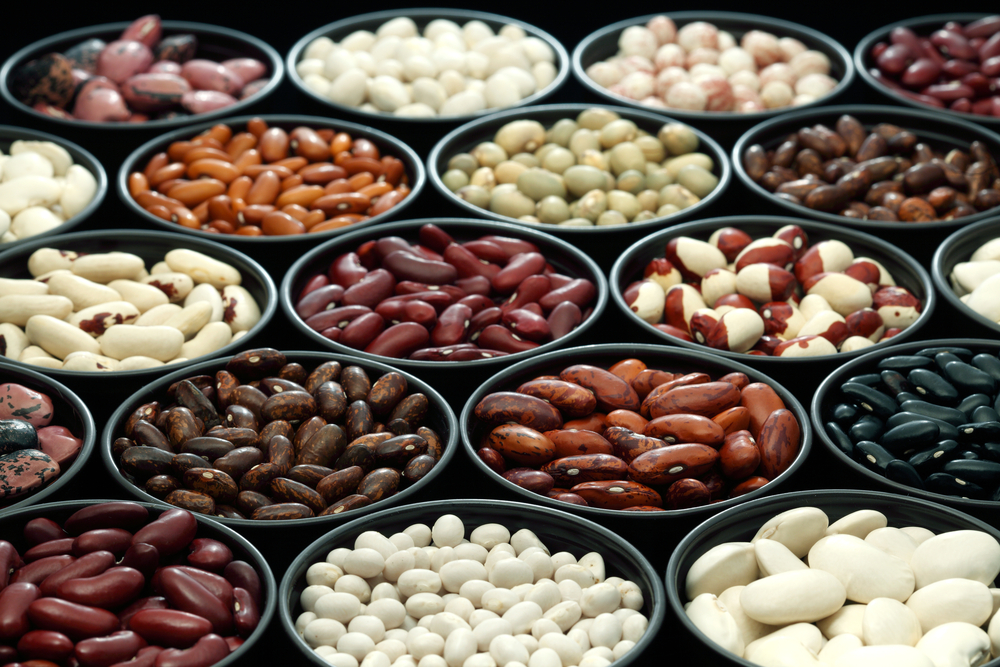 Beans for the body: composition, benefits, contraindications
Beans for the body: composition, benefits, contraindications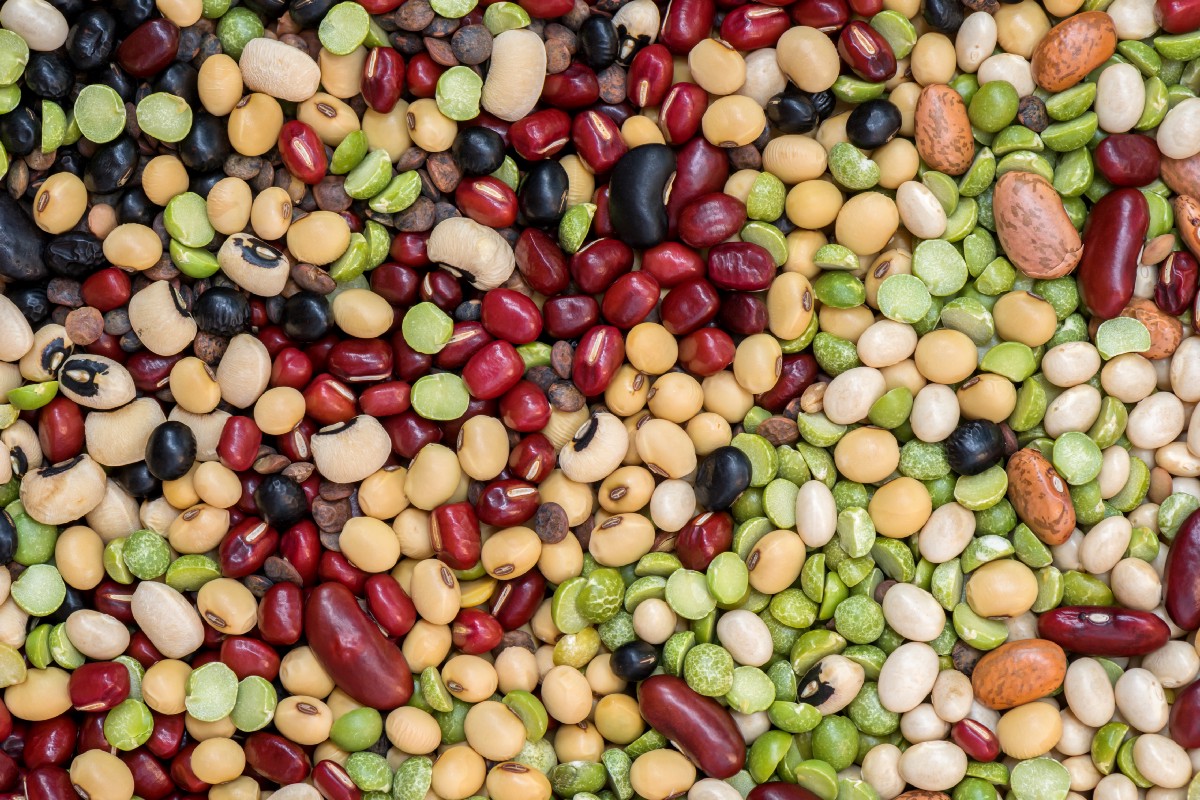 Types and varieties of beans: their name, description and photo
Types and varieties of beans: their name, description and photo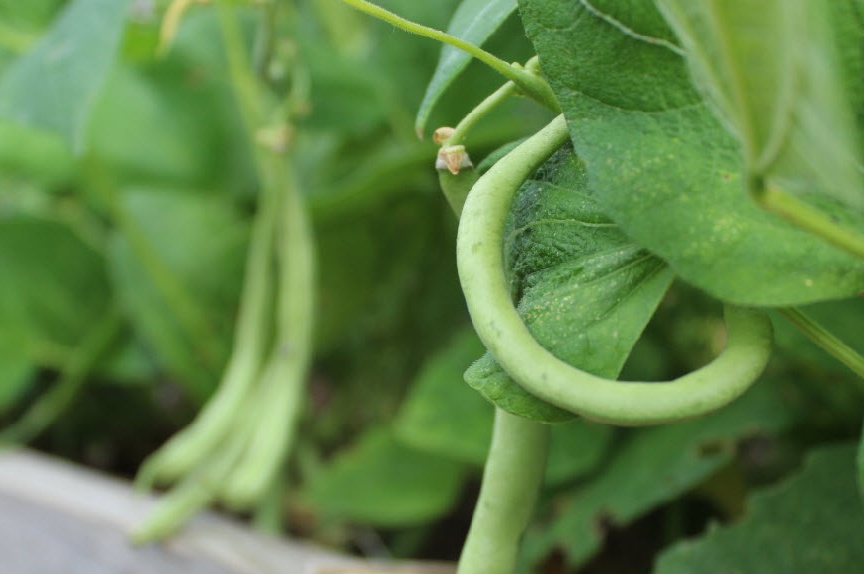 Description and photos of popular varieties of asparagus beans
Description and photos of popular varieties of asparagus beans